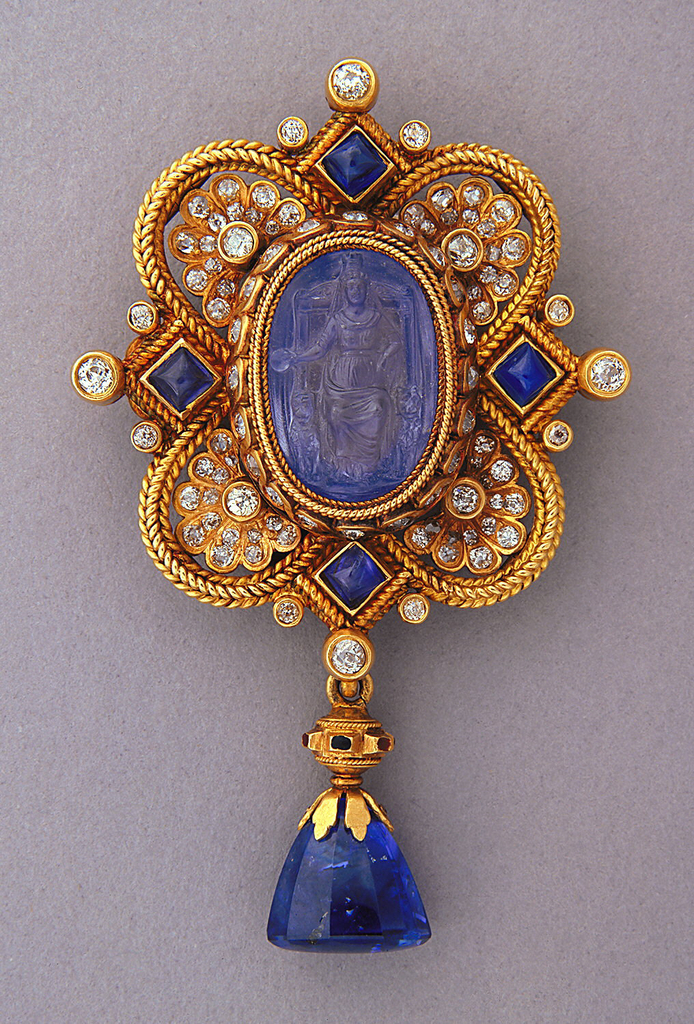The Castellani jewelry firm (1814 – 1927) became known for its “Italian Archaeological jewelry,”[1] which consisted of copies and imitations of Roman, Greek, and Etruscan jewelry. The firm’s works in this style became especially popular starting in the 1850s due to a rise in nationalism as a result of efforts to unify Italy, though they started to produce the style in the 1830s. These types of works were seen by Italians as a reflection of their heritage and a connection to their past. The Castellanis studied ancient works and part of their goal in recreating these items was to return to traditional craft and jewelry making methods.
This brooch is particularly patriotic as the cameo in the center depicts the personification of Italy. The brooch dates to the end of the nineteenth century, after the unification of Italy. Patriotic feelings persisted in Italy through the fiftieth anniversary of the reign of King Victor Emmanuel II, who supported the unification of Italy, celebrated in 1911.[2] By the time that this brooch was created the Castellanis were known for their cameo production. Creating cameos from jewels, such as the sapphire that this one is made from, was more time-consuming than the increasingly popular and softer shell, which set the Castellani jewelry apart from those who had started to imitate their style.[3] However, the Castellanis did not create these cameos themselves. Instead they commissioned gem carvers to engrave and carve stones they already possessed. Works commissioned by the Castellanis from these gem carvers were marked with the firm’s signature, a double C, much like the logo of the contemporary company Chanel, on the back of the piece. This brooch has the double C mark.
Audrey Sutton is a graduate student in the History of Design and Curatorial Studies program at the Cooper Hewitt, and is a Fellow in the Product Design and Decorative Arts Department.
[1] Susan Weber and Stefanie Walker. Castellani and Italian Archaeological Jewelry. (New Haven: Yale University Press, 2004): 9.
[2] Ibid: 31.
[3] Ibid: 107.
